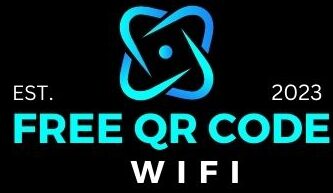Explore the world of measurements with our versatile unit converter. Effortlessly switch between units for length, temperature, time, and more. Your go-to tool for precise calculations!
In a world where measurement forms the very foundation of understanding, we embark on a journey that bridges the gap between ancient wisdom and modern convenience. Welcome to a realm where numbers and units intertwine seamlessly – where the significance of temperature, the essence of time, and the depths of distance converge. This is your invitation to explore the remarkable world of unit conversion, a tool that empowers engineers and curious minds alike to unlock precision and unravel complexities. Join us as we delve into the captivating universe of measurements, conversions, and the magic they hold.
Unit Converter
Unit Converter: Bridging Measurement Systems with Ease
Measurement is the bedrock of understanding the world around us. Whether it’s gauging weight, temperature, length, or time, the act of measurement has been an integral part of human existence since ancient times. These quantifiable standards provide insights into the methods our forebears used to navigate the challenges of daily life with precision and numerical values. From the evolution of barter to modern currency systems, the shift from human body parts as measurement units to contemporary standards, and the progression from sundials to digital clocks, the journey of measurement is a captivating narrative of progress.
The Importance of Modern Unit Conversion
In today’s world, unit conversion calculators hold immense significance. Advanced algorithms have given rise to potent online unit converter tools that enable effortless transitions between diverse units of measurement across twelve categories. From length and force to flow and temperature, this unit converter is a versatile resource. It comes equipped with customizable features, enhancing its utility. Should a user encounter difficulty in extracting values from a specific unit, detailed descriptions for each unit, along with instructions on optimal usage, are available online for free. These tools align with scientifically established standards for measurement groups, ensuring precision and international consensus.
Simplifying Complex Conversions
The output value box of this program furnishes straightforward one-to-one conversions for the selected units. Some of the prominent groups that can be converted seamlessly include:
- Length Converter
- Temperature Converter
- Time Converter
- Area Converter
- Weight Converter
- Bits/Bytes Converter
- Torque Converter
- Power Converter
- Pressure & Stress Converter
- Velocity & Speed Converter
- Volume & Capacity Converter
- Electricity/Voltage Converter
The Role of Unit Converters for Engineers
Engineers heavily rely on unit converters to facilitate precise conversions tailored to specific contexts and purposes. Consideration of significant figures ensures exactness in measurement details. Occasionally, “Soft Conversions” come into play. These conversions involve transferring values from one unit system to another, without decimal values. For instance, converting 1 Foot (ft) into Centimeters (cm) results in a rounded value of 30 cm in soft conversions. In contrast, “Hard Conversions” retain values after the decimal point, yielding 30.48 cm.
The Science of Temperature Measurement
Temperature measurement has witnessed the utilization of various tools over time, with the thermometer emerging as the most widely used. The thermometer serves dual functions: recording temperature changes through sensors and presenting numerical results. Its primary purpose is to capture variations in heat and cold. Thermometers are employed in diverse scenarios, from checking oven temperatures during baking to monitoring body and air temperatures.
Diverse Temperature Measurement Units
Four prominent temperature measurement units shed light on temperature distinctions:
- Fahrenheit: In the classic English system, water freezes at 32°F and boils at 212°F.
- Celsius: Rooted in water’s properties, 0°C marks freezing, while 100°C signifies boiling.
- Kelvin: Tied to absolute zero, Kelvin’s zero point is at -273.15°C.
- Rankine: Primarily used in US engineering, it establishes an absolute zero degree point.
The Essence of Time Measurement
Time, a fundamental dimension, segments and quantifies past and present events. It dictates our routines, schedules, and daily lives. The time converter tool facilitates international time zone comparisons, world clock checks, and year-to-century conversions. Additional features encompass Sidereal and Mean Solar days, hours, and minutes.
Unveiling Length and Distance Measurement
While often conflated, length and distance measurement serve distinct purposes. Length pertains to an object’s dimension, while distance gauges the spatial gap between objects. In the International System of Units (SI), the meter serves as the base unit for both length and distance. The metric system encompasses units like kilometers and centimeters. Common alternatives include the inch, foot, yard, and mile. Importantly, distance is scalar and can never be negative. Circular objects’ distances are determined using their radii.
In conclusion, the unit converter is a vital tool bridging diverse measurement systems, simplifying conversions, and enabling precise calculations for engineers and enthusiasts alike. The evolution of measurement, from ancient methods to modern tools, underscores humanity’s constant quest for accuracy and understanding.
FAQs
- How do unit converters work? Unit converters leverage algorithms to provide swift and accurate conversions between different measurement units.
- Can unit converters handle complex conversions? Yes, modern unit converters can seamlessly handle intricate conversions across various measurement categories.
- Why is temperature measured in multiple units? Different temperature measurement units cater to diverse scientific, engineering, and everyday needs.
- What’s the significance of significant figures in conversions? Significant figures ensure precision by considering the relevant number of digits in a measurement.
- How does time measurement impact daily life? Time measurement structures our routines, schedules, and activities, shaping our daily existence.




